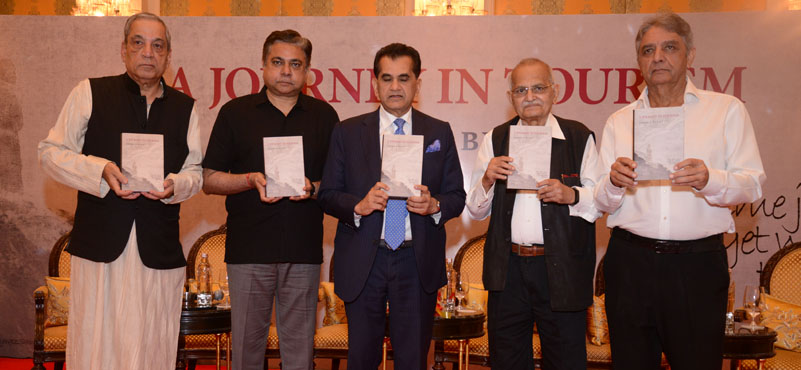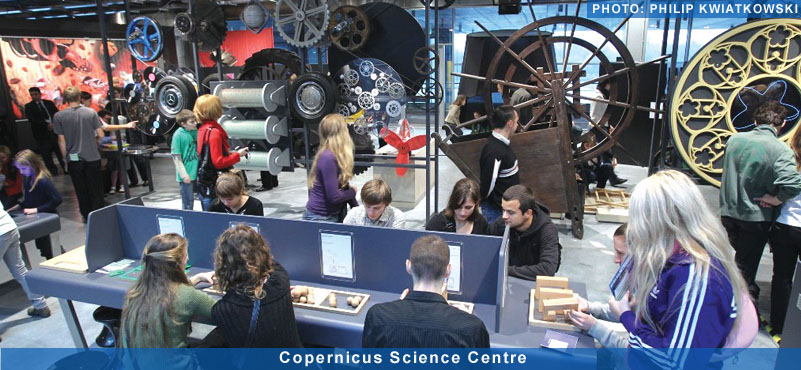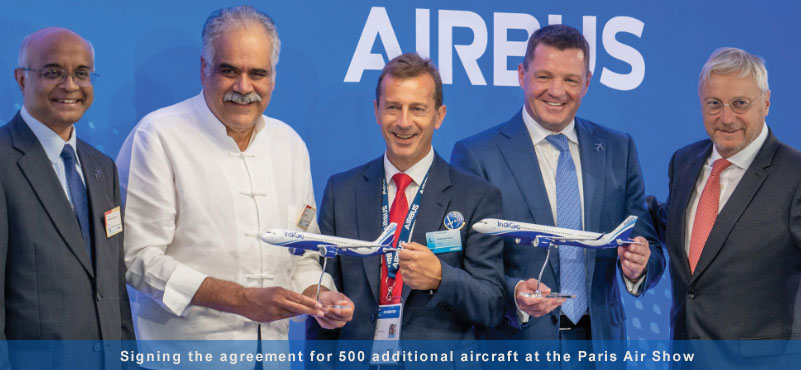Ministry of Tourism is keen on roping in local stakeholders to create synergy for conservation and upkeep of heritage monuments, shares Secretary Rashmi Verma in an exclusive interview. She suggests that the ministry is eyeing thematic campaigns to muscle up India’s visibility in Buddhist and ASEAN countries. Excerpts:

There has been some concern on your having awarded the Red Fort to a private company. It appears the terms of the tender have not been shared completely with the country at large? What is your understanding? People are also wondering where was the need to outsource a public monument to a private sector company with zero background in conservation?
All our methodology of selection and how you can apply is available on our website; what is the process, what committees will look into your proposal, all that is available and featured on the website. People can go on the website and apply; any all India scheme or for any tourist sites… In fact we have some offers for some trekking routes in Leh and Uttaranchal and we have signed an MOU with an agency such as NBCC… as the agency who has offered to adopt the Purana Qila. For monuments of course we have a tripartite agreement with the agency, with ASI and the tourism ministry and the MOU for each monument clearly spells out what is the thing which the corporate sector is required to do, which is the area they have to focus on and what is the timeline etc. and a copy of each MOU is put up on our website; everything is transparent, and so are the terms for Red Fort. There is nothing not transparent.
But will you keep monitoring how the progress is happening?
Yes, we have in fact a monument-level committee also which will be looking at progress made and whether they are adhering to the timeline, checking that they are following the terms of reference as underlined in the MOU. And at our level also, at a senior level, based on the report of the monument committee, we will also be monitoring.
What was the basic inspiration behind this?
Basic inspiration is that even after so many years and after having so many iconic sites in India, we are still not able to give a world class experience to tourists who are going to these sites. In India, we don’t have to create sites, we already have them. But when we go there, we find that the amenities which are required for the tourists – such as clean toilets, drinking water, Wi-Fi, the cleanliness around, the illumination of the monument – we have not been able to give these to the tourist, thereby limiting their sense of an international experience. Then we looked at reasons why this is not happening. The ASI is putting a lot of effort into this, but lack of resources both in terms of the financial and human, it becomes difficult for the ASI to monitor. For instance, we can build toilets, but it is very difficult for a government agency to ensure the maintenance of facilities, because mostly in government our schemes are geared towards creating new infrastructure but not to maintain them and it becomes difficult. So, we said that ASI needs to focus on core activities like conservation and restoration of the monument and the non-core activities which are more the maintenance of amenities, that are essential for the purpose of enhancing the visitor experience, we can segregate the two and offer the latter to the corporate sector.
Therefore, you envisage a continued role for ASI?
The restoration and conservation of the monument will continue to be done by ASI, unless they themselves feel the need to call in some experts, etc. As far as the tourist experience is concerned, this we can offer to the corporate to manage in the second phase. We have divided the amenities to be created by the public sector in three phases; one is the short term which is the basic amenities, second is the medium term which is interpretation centre, etc and the third will be slightly longer, like the facilities required around the monument. So, therefore, the core activities of conservation and restoration will continue to be with ASI.
But for instance, hiring consultants to enhance the total history of the area will be looked into by?
History will be experienced through the interpretation centre, through the light and sound show, and others that will showcase the history and this will be in partnership with the corporates. And this will depend from monument on monument, and as individual need.
But this private contractor that you take or the corporate sector whom you engage for phase 1, are also committed to phase two and three or not at the moment?
Some are and some are not. But we do not take any money from them and we do not pay them anything. Again, this varies from monument. to monument.
Which is the next monument that you plan to lease out?
We have already given Purana Kila to NBCC. And, the Red Fort to Dalmia and we are looking at many other monuments like Qutub Minar, etc with many corporates showing interest in them.
Is there any tussle going for the Taj Mahal?
There is no tussle. There are 2-3 companies which have come forward and we have a committee which is co-chaired by me and the Culture Secretary, as well as DG Tourism and DG ASI, and they are all in talks. And whenever there is more than one bid for any monument, we call each one of them to come, make a presentation, and after reviewing their presentations and their vision document, and the kind of commitment they are looking to make, the committee takes it further.
What is your overall impression of the response from the private sector?
It’s been very good but I would be happier if we got more response from the tourism sector. What we were looking for, is that it is the tourism sector that really gains from increasing footfalls at these sites. But unfortunately so far, the response from the hotel industry is very limited – only a couple of them have come forward. I think there is need for others to also come forward but overall the response has been extremely good. We have even had some schools coming forward, such as Bluebells School, have come forward to give a vision document for adopting a monument near their location. And this is what we envisaged that if there is a monument and a stakeholder who is near it, takes on the responsibility of the cleanliness, then there is good synergy. We are very happy that we are not only looking at industry. We have also had some NGOs coming forward.
In your dialogue with the tourism industry, I am sure you have already spoken with some of them. Is there any reason for their reluctance?
Some of them are finding it difficult to commit resources for the next 5 years, given that is what we are looking for. But some are now making efforts and coming forward.
I am seeing that possibly this is a capacity building measure for our tourism industry as a whole, to manage our resources.
It is not capacity building in terms of human resources, but it is certainly partnering with the corporate sector and with other stakeholders who come forward to be able to offer world-class facilities in enhancing the tourist experience.
Would you extend this formula to a larger field in the overall field?
To begin with, we had selected only about a 100 ASI monuments but there was a lot of request from a lot of agencies that they would like to adopt some other sites as well. For instance, some of the beaches, trekking routes etc. Regarding, trekking routes, we have given in Leh and Uttarakhand. The Adventure Tour Operators Association has taken those two routes and they are going to ensure the cleanliness and basic amenities, such as clean drinking water on those two routes and also creating awareness among the local people. Similarly, we have got suggestions from state governments wanting to add to the list of monuments in their states.
Would you extend this to someone overseeing the upkeep of Connaught Place?
Connaught Place is a market and it is basically the responsibility of NDMC and it is not a tourist destination as far as we are concerned. Those things that are not in the domain of ASI, can get best addressed only when the owner or the manager of the property comes forward and wants to be a part of this effort.
As we are discussing the larger concerns of tourism, we must also ask what would be the 2-3 leading initiatives initiated in this point of time by MoT?
For the first time, we have got an integrated marketing campaign, a centralised campaign, both for within India and also for our overseas offices. For the first time, we are integrating the two. We have already launched the Incredible India campaign 2.0 which is thematic and market specific. We are getting some new thematic films made. Our new film on Yogi on the Race Track was launched in ITB Berlin and within a month we had a viewership of more than 25 million. Now we have got new films on luxury, Indian cuisine and Ayurveda which we will be using in our campaign, which we have already finalized in both digital and electronic. We are also hoping to run a campaign within the domestic market and for the first time again we ran a campaign exclusively for our diaspora encouraging them to visit India to not only visit their relatives but also to explore India. We chose those channels that are most watched by our diaspora in our key markets. So, the marketing budget has also been enhanced, just for publicity, it is about Rs 400 crores. But again, this will be supplemented by the efforts of the overseas offices which will be another Rs 200 crores – so it is a big budget. We are also looking to do a thematic campaign in Buddhist countries and ASEAN countries.
Any plans to dovetail your money with that of the state governments?
We are for the first time going to share, once we have finalized our marketing plan, with the industry and the state governments, and everybody can supplement it with their efforts and they can ride on whatever we are doing and there will be guidelines for this. It’s almost ready. So, within a fortnight or so, we will be sharing this.
We have selected 12 iconic sites in the country to develop them to a world class level. This is a holistic development where we are not only looking at the site also looking at air connectivity etc. These include Taj Mahal, Red Fort, Qutub Minar and Purana Kila. Mahabalipuram and Khujaraho, Hampi and Somnath. We are going around and doing a stakeholder consultation. We have already finished these consultations for about 10 sites – to do a gap analysis and also hire consultants for each site, who will make a master plan. We will then interact with the concerned ministries, based on the master plan, and get these implemented. For the first time, we will be creating infrastructure and looking at the holistic development of these iconic sites.
By when can we hope to see action on this?
We are in the process of hiring a consultant for each of these sites. Our master plan would take about 2-3 months and action will start. Meanwhile, whatever we can start working on immediately, we will start on that, and not wait for the master plan.
Any other big bang thing?
For the first time, we are having a Global Travel Mart in India. We have finalized 16-18 September in Delhi for this event, in partnership with FAITH. So, we will start working on this and plan to get a large number of foreign buyers.
We are also having the Buddhist conclave in the last week of August, this year. This is about 200 delegates.




































